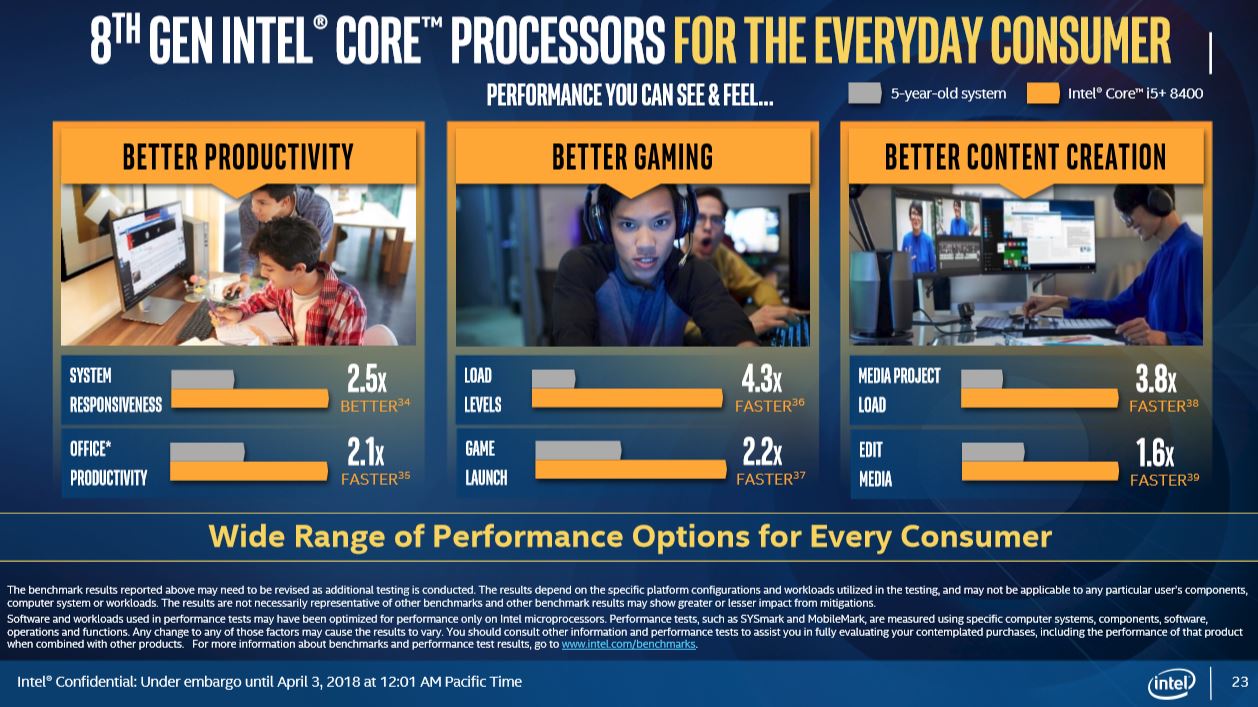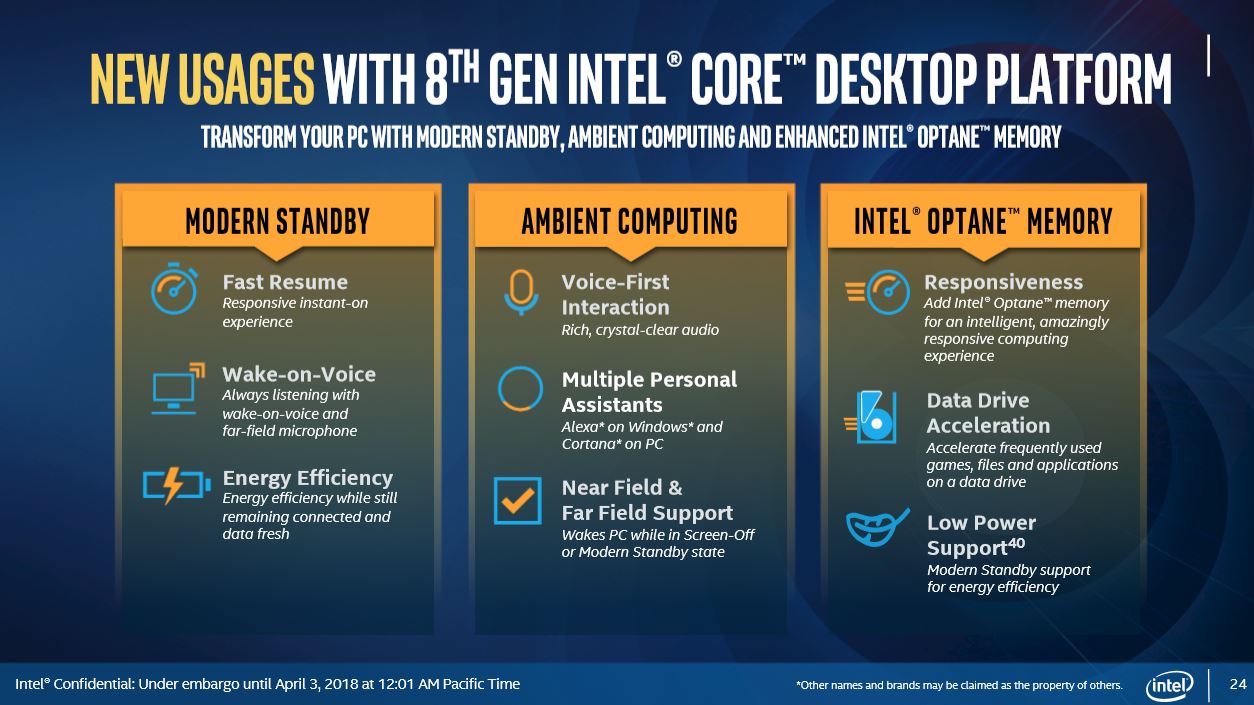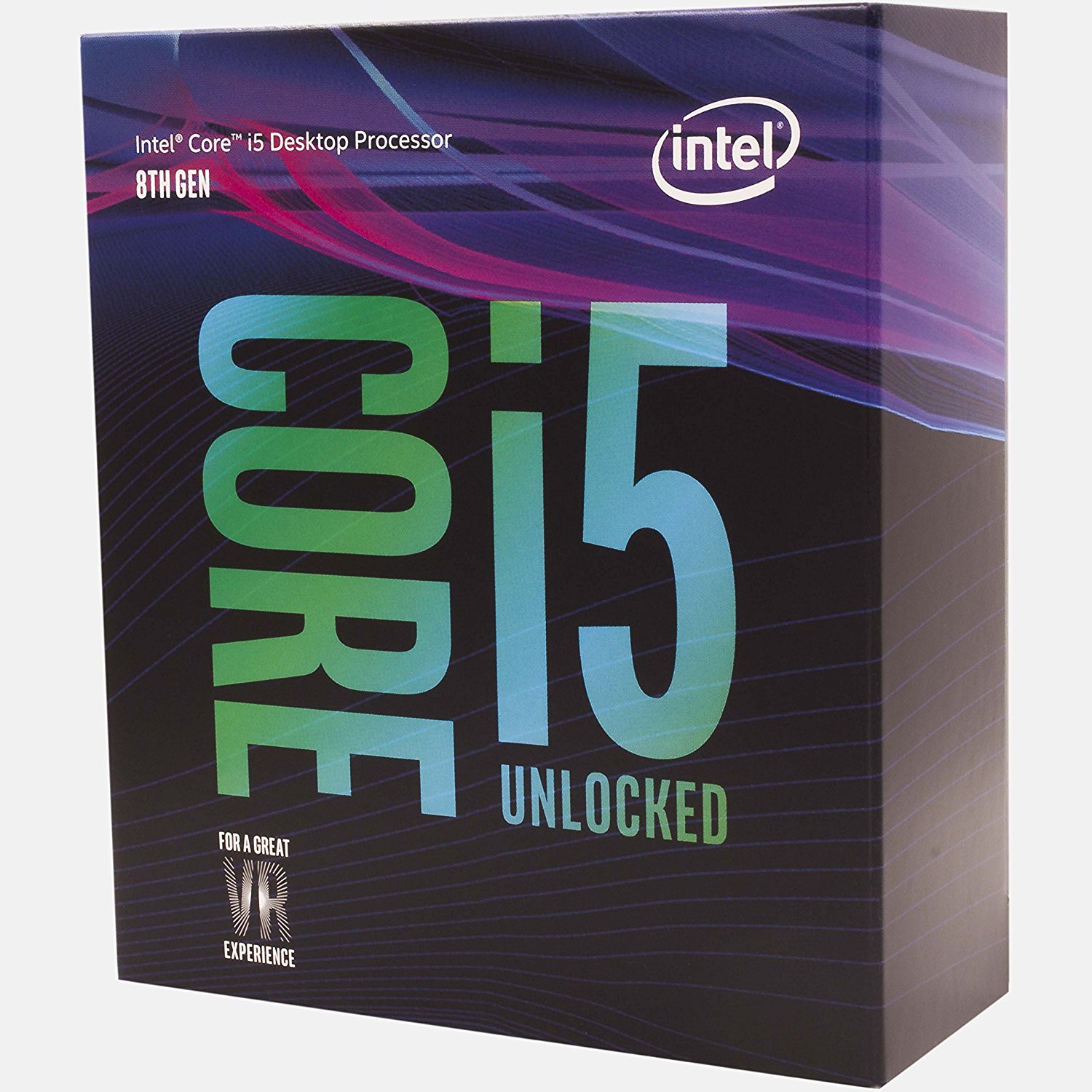Intel Adds To Coffee Lake CPU Family, Outs New 300-Series Chipsets
It's been six long months since Intel first debuted its Coffee Lake processors and the 300-series chipset. Unfortunately, Intel released only six Coffee Lake processors in the initial salvo, but now it has added some more heft to its Coffee Lake lineup. Intel also only released the Z370 motherboards, leaving enthusiasts without a value motherboard option to pair with Intel's locked processors.
Now we know why: Intel's initial chipsets were merely an iteration of the previous-gen 200 series, meaning they featured the same specifications, while today's launch finds the company releasing an entirely new lineup of chipsets based on the Cannon Lake PCH.
First, let's cover the remainder of the Coffee Lake lineup.
New Coffee Lake Processors
Intel offers standard processors that feature normal TDP ranges, as we see with the top three processors in the chart below, as well as T-Series "power-optimized lifestyle" models that come with lower TDP ranges. As such, those processors are designed for low power applications and feature reduced clock speeds and overall performance. As we can see, that reduced performance doesn't come with a reduced price tag, thus making T-Series processors thoroughly uninteresting for the enthusiast crowd.
Intel's new additions don't hold many surprises, other than the fact that the release is relatively narrow and doesn't include any new standard Core i7 models. The new Core i5 and i3 models are expected iterations of the existing 14nm++ Coffee Lake lineup. The Core i5 models come with a 6C/6T design, and the Core i3 model has the expected 4C/4T architecture. Much like their Coffee Lake predecessors, the Core i5 models support up to DDR4-2666 while the Core i3 models support DDR4-2400. The only real surprise comes in the form of the Core i3-8300's 62W TDP, which is a 3W reduction compared to other Coffee Lake Core i3s.
The Core i5-8400 is a popular processor with enthusiasts even though it comes with a locked multiplier, but the Core i5-8600 may be the processor to beat. It features a 500MHz reduction in base frequency compared to the Core i5-8600K, but it also comes with the same 4.3 GHz boost frequency. All the other key specifications, aside from the 65W TDP, are identical to the Core i5-8600K that comes with a $44 premium. The Core i3-8300 also makes for a compelling offering that bridges the huge price gap between the -8100 and -8350K. As per Intel's new policy, it is no longer sharing multi-core Turbo specifications.
Intel Expands The 300-Series Chipsets
Intel's new chipset is a far more interesting topic. It's based on the unreleased Cannon Lake PCH and comes with native support for USB 3.1 Gen2 (up to six ports). Intel uses the 14nm process for the new PCH, whereas the Z370 features a 22nm process node. Logically, that means the new chipset should have a lower TDP rating, but Intel hasn't shared specifics.
Get Tom's Hardware's best news and in-depth reviews, straight to your inbox.
Intel also doubled Wi-Fi capabilities with support for Wireless-AC 2x2 160 MHz. Intel integrated the MAC into the chipset, but it still requires a PHY for operation, thus reducing costs and avoiding additional FCC requirements for the chipset. Intel offers its own CNVi module as the other half of the integrated solution, but the company also supports third-party solutions. This speedy connection, which debuted with the Gemini Lake processors, provides more bandwidth than a wired connection with up to 1,733 Mbps, but it requires a router that supports the feature.
As expected, the H-, B-, and Q-series chipsets do not support overclocking, and they cannot split the 16 CPU-based PCIe 3.0 lanes across multiple devices. The H310 chipset doesn't support Optane memory nor Intel's Smart Sound technology. The Q370 chipset is the lone vPro-compatible offering.
| Intel 300 Series Chipset Features Table (April 2018 Updates) | |||||
|---|---|---|---|---|---|
| Row 0 - Cell 0 | Z370 | Q370 | H370 | B360 | H310 |
| DDR4 Overclocking | Yes | No | No | No | No |
| On-CPU PCI Express*3.0 Configuration(s) | 1x16 or 2x8or1x8+2x4 | 1x16 or 2x8or1x8+2x4 | 1x16 | 1x16 | 1x16 |
| Independent DisplayPorts / Pipes Support | 3/3 | 3/3 | 3/3 | 3/3 | 3/2 |
| Memory Channels / DIMMs per Channel | 2/2 | 2/2 | 2/2 | 2/2 | 2/1 |
| Processor Overclocking | Yes | No | No | No | No |
| Integrated Intel Wireless-ACSupport (CNVi) | No | Yes | Yes | Yes | Yes |
| Intel Optane Memory Support | Yes | Yes | Yes | Yes | No |
| Maximum High Speed I/O Lanes | 30 | 30 | 30 | 24 | 14 |
| Maximum USB 3.1 Ports: Gen 2 / Gen 1 | 0/10 | 6/10 | 4/8 | 4/6 | 0/4 |
| Maximum SATA 6Gb/s Ports | 6 | 6 | 6 | 6 | 4 |
| Maximum PCI Express* 3.0 lanes | 24 (v3.0) | 24 (v3.0) | 20 (v3.0) | 12 (v3.0) | 6 (v2.0) |
| Intel Rapid Storage Technology | Yes | Yes | Yes | Yes | No |
| Maximum Intel RST for PCIe Storage Ports (x2 M.2 or x4 M.2) | 3 | 3 | 2 | 1 | 0 |
| Intel RST PCIe RAID 0, 1, 5 | Yes | Yes | Yes | No | No |
| Intel RST SATA RAID 0, 1, 5, 10 | Yes | Yes | Yes | No | No |
| Intel RST for CPU-attachedIntel PCIe Storage | Yes | Yes | No | No | No |
The H370 supports the maximum 24 PCIe 3.0 lanes, which Intel pares back to 20 for the H370, 12 for the B360, and six PCIe Gen 2.0 lanes for the H310. The H370 and Q370 chipsets support the full 30 HSIO (High Speed Input/Output) lanes, while the B360 is pared back to 24 lanes, and the H310 only supports 14 lanes.
All the chipsets feature a varying number of maximum supported USB Gen 3.1 ports, which is further split into the number of allowable Gen 1 and 2 ports. Intel also differentiates the chipsets by removing the Rapid Storage Technology feature entirely from the H310 chipset and placing various restrictions on the number of supported PCIe storage ports for each chipset. Naturally, that also has an impact on supported RAID levels. Intel also completely disabled support for CPU-attached PCIe storage for all but the Z370 and Q370 motherboards.


The chipset supports Wake-On-Voice and enhanced voice recognition for Alexa and Cortana, along with other voice-activated personal assistants. The new audio DSP supports using up to five independent voice-activated applications simultaneously while the PC is in a low power state. These new features only apply to the new H-, Q-, and B-series motherboards; the Z370 motherboards will not support them. Intel also announced support for increased Optane functionality.
The new chipset also supports Windows 10's modern standby, which allows for lower power states during idle and faster resumption from low power states. California's CEC has established crushing new power requirements that are coming in two tiers. Intel's modern standby feature is compliant with the tier 1 regulations that kick in on January of next year. The tier 2 regulations come into effect in July 2021. To meet the requirements, Intel had to bring support for the C10 power state (which is currently only present on mobile processors) to desktop processors.
Intel also provides us with its internal performance data compared to five-year-old systems. This launch marks the first time that Intel has used results that represent the impact of the Spectre/Meltdown patches. We know that older processors suffer from a much larger performance hit from the patches, so while these results represent actual post-patch performance, Intel likely gains a small bump in several of the benchmarks that compare the older Ivy Bridge system to the new processors. We've included the test notes below in a click-to-expand format.
Thoughts
Intel's new chipsets are based on the upcoming Cannon Lake-based PCH and bring a newer process node and features to the desktop platform. The new chipsets feature expanded features that may leave enthusiasts with Z370 motherboards feeling left out in the cold, as Intel has no plans to bring the partially-integrated Wireless-AC support, improved audio DSP, or integrated USB 3.1 features to the now-aging platform. That's a shame, because Z370 motherboards are the only 300-series chipset that supports overclocking. We have heard rumblings about the new Z390 chipset, and recent support pages have also left clues to its existence, but Intel doesn't discuss future products, so we don't have further details.
Intel's new list of Coffee Lake processors is surprisingly light, but the Core i5-8600 and Core i3-8300 look like compelling options that should make an appearance in our labs soon.

Paul Alcorn is the Editor-in-Chief for Tom's Hardware US. He also writes news and reviews on CPUs, storage, and enterprise hardware.
-
gggplaya Those base clock speeds for the 6 core chips are really low. Even with a higher IPC than AMD the Ryzen chips might actually edge them out in clock speed, especially because they'll overclock easily and lock in at 3.8+ ghz on the stock cooler and a cheaper B350 motherboard.Reply
The real test is to see if those 6 core i5's will hold and sustain turbo on multiple cores at higher speeds with a decent cooler like the EVO212. If they can't, then i'd buy a Ryzen. -
plissandro lol, if the problem with lga1151 v1 was power delivery... I would see no problem with those "T" variants being supported in older mobos. Intel and their BSReply -
DGurney Why would anyone buy a processor now that doesn't have a hardware solution to Spectre and Meltdown?Reply

